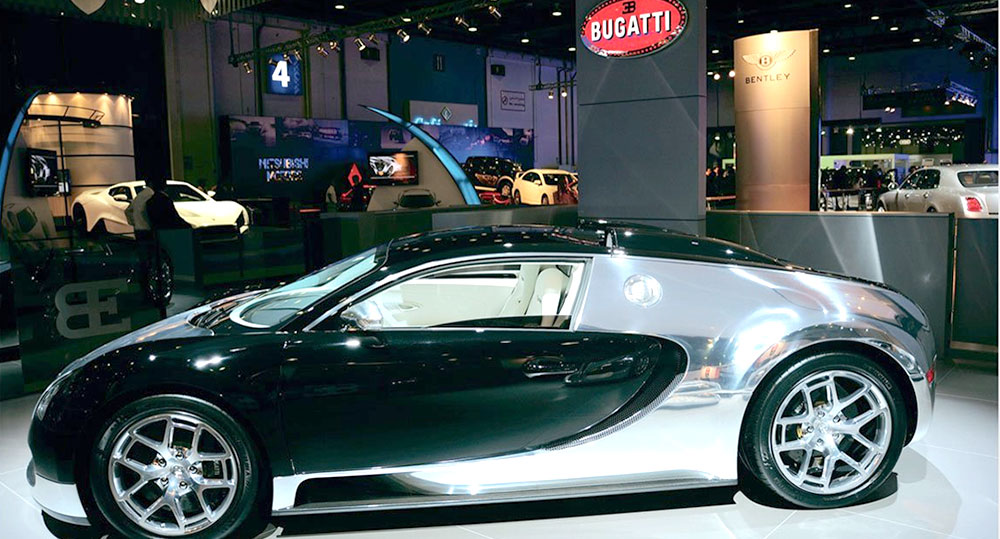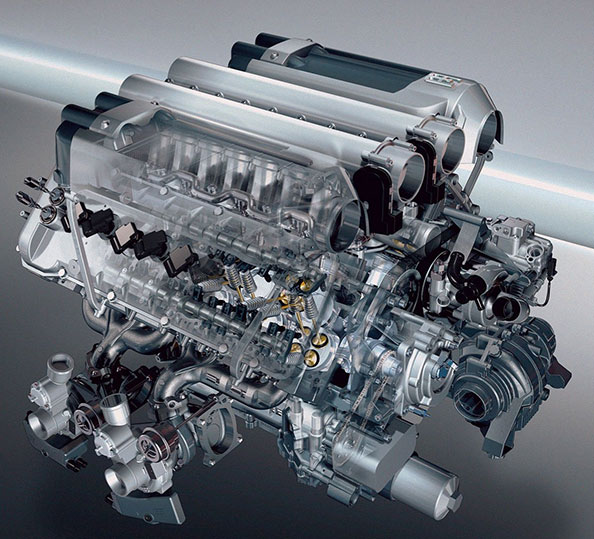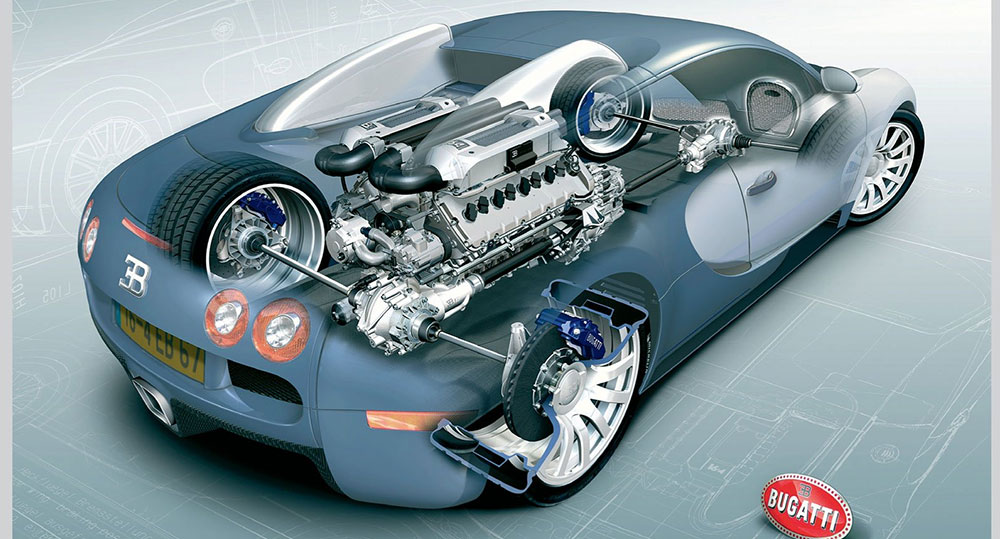

instant, resulting in a negligible loss of acceleration. and this system this cloud be operated by the driver in either an automatic or manual mode. the lightning-quick gear changes offered by the
veyron’s dual-clutch’ configuration is extraordinary even in the context of supercar history.
The whole complex set- up is controlled by computers akin to those used in Fl, there is no clutch pedal as these computers control the clutch discs as well as the actual gear shifting. For the Veyron, Bugatti wanted this ultra-complex gearbox system to achieve all of these remarkable feats reliably- similar technology on an F1 car is designed to sometimes last only a few hours; the Veyron gearbox was expected to last at least ten years, ideally many more. A team of fifty engineers spent five years perfecting the system.
Two engineers build just one gearbox a week. Yet more headlines. One Bugatti had the enormous 1001 bhp harnessed through that highly innovative gearbox, the distribution of all this power to the road had to be permanent four-wheel drive – otherwise, the car would most likely just suffer almost constant wheel spin. And the Veyron’s four wheels were themselves gargantuan, the rear tires being the biggest ever fitted to a road car. This meant
The Veyron is a so-called mid-engine’ supercar, a layout which very useful for favorable weight distribution.
The heaviest part of the car is thus near the center of the vehicle, which is better for holding and also overall balance and stability. The rear tires have more weight above them so, therefore, more traction too. One obvious drawback-almost always no rear seats

At 710 millimeters in length, the Veyron’s 16- cylinder mid-engine is not necessarily bigger than a conventional
V 12 power unit. Its compact dimensions are made possible by the unique W layout, made up of two offset double row banks, each comprising eight cylinders and with a bank angle of 15 degrees.
The two banks in the W 16 are set at an angle of 90 degrees to each other, housed in a single crankcase meaning they
function as a single-engine, in this instance aspirated by four The engine has four valves per cylinder, 64 valves in total. it has a dry-sump lubrication system influenced bu formula 1 technology and innovative engine cooling systems
The engine is 71 cm long and weighs around 400kg. Maximum torque is a frankly bonkers 1250Nm (922 ft/Ib)
So Bugatti had created an engine for a road car that possessed more bhp and acceleration than a Nascar.
Clearly, generating such colossal power was all very impressive but if the gearbox fitted was remotely ordinary, the amount of energy passing through the transmission would shatter the teeth on the gears in milliseconds.
Something completely unique had to be created to harness this apocalyptic power. The new car would boast an engine torque of 1250 Newton-meters (Nm), which was staggering. So, like much of Veyron, the gearbox became a case of reinventing the wheel
(if you will excuse the pun) that saw Bugatti fit the Veyron with a so-called DSG box. For the gearbox anoraks among you, that is a seven-speed via a super-fast dual-clutch. VW evolved an idea that had been used previously within their group from 2003 in a simpler form for cars such as the Golf R32 and a little later the Audi TT.
A conventional car uses a single clutch to prepare the next gear. But the Veron has two clutch, so, for example, while you are driving along in fourth gear, the second clutch will prepare fifth gear, ready and waiting for an almost instant gear change. in fact, the car’s gear changing is so to be
virtually
-
BUGATTI VEYRON – A QUEST FOR PERFECTION

This post was created with our nice and easy submission form. Create your post!



One Comment
Leave a Reply